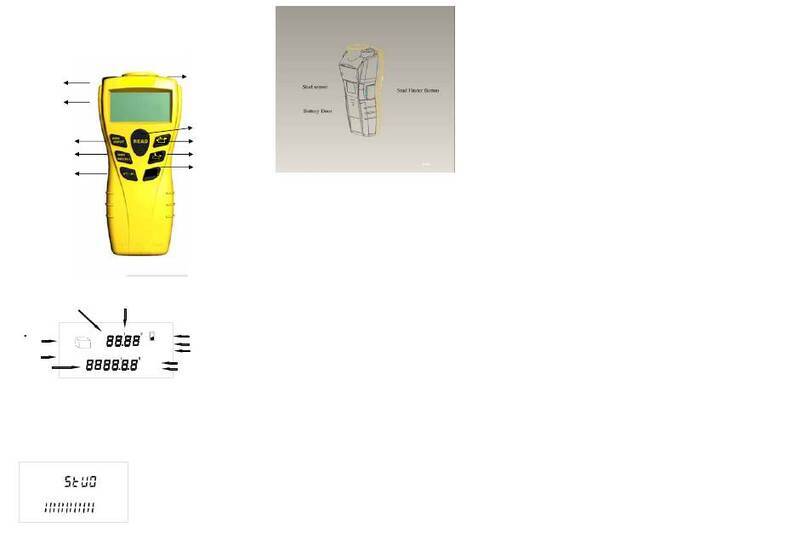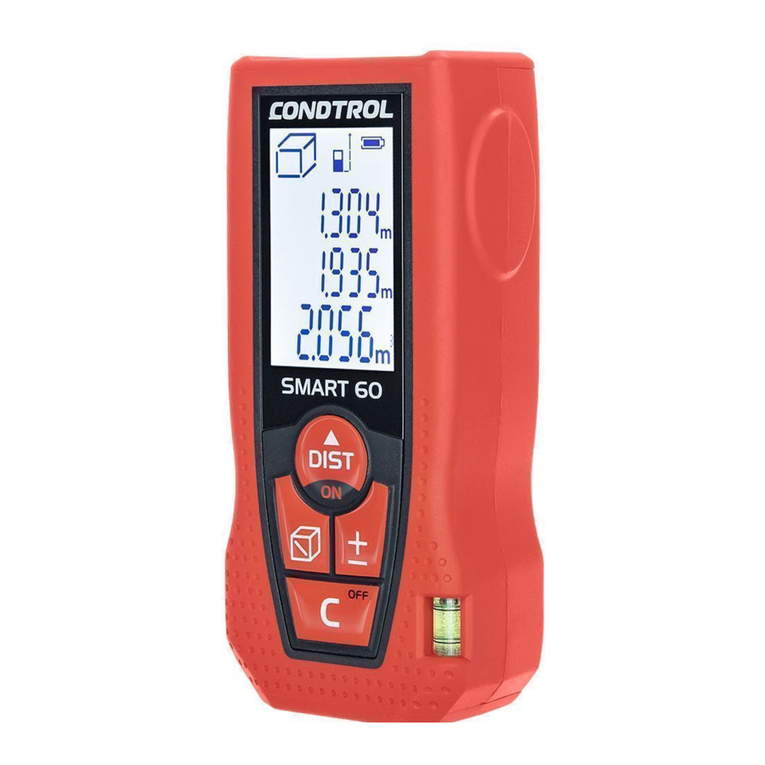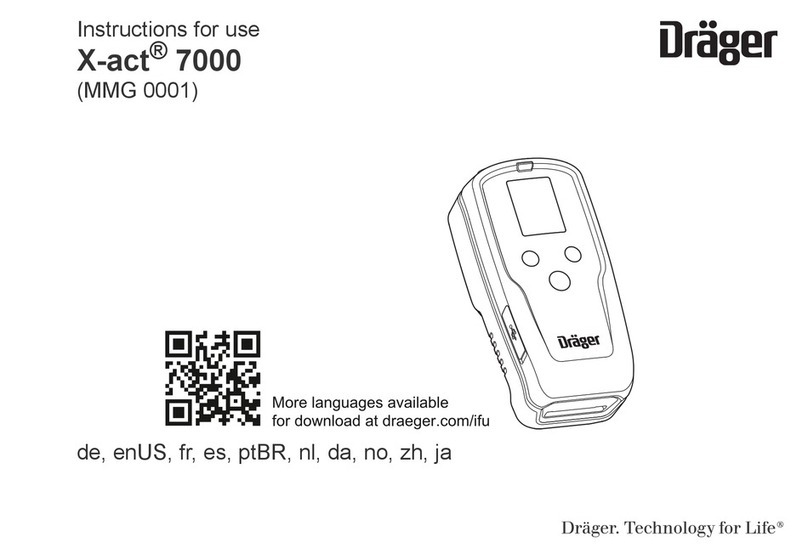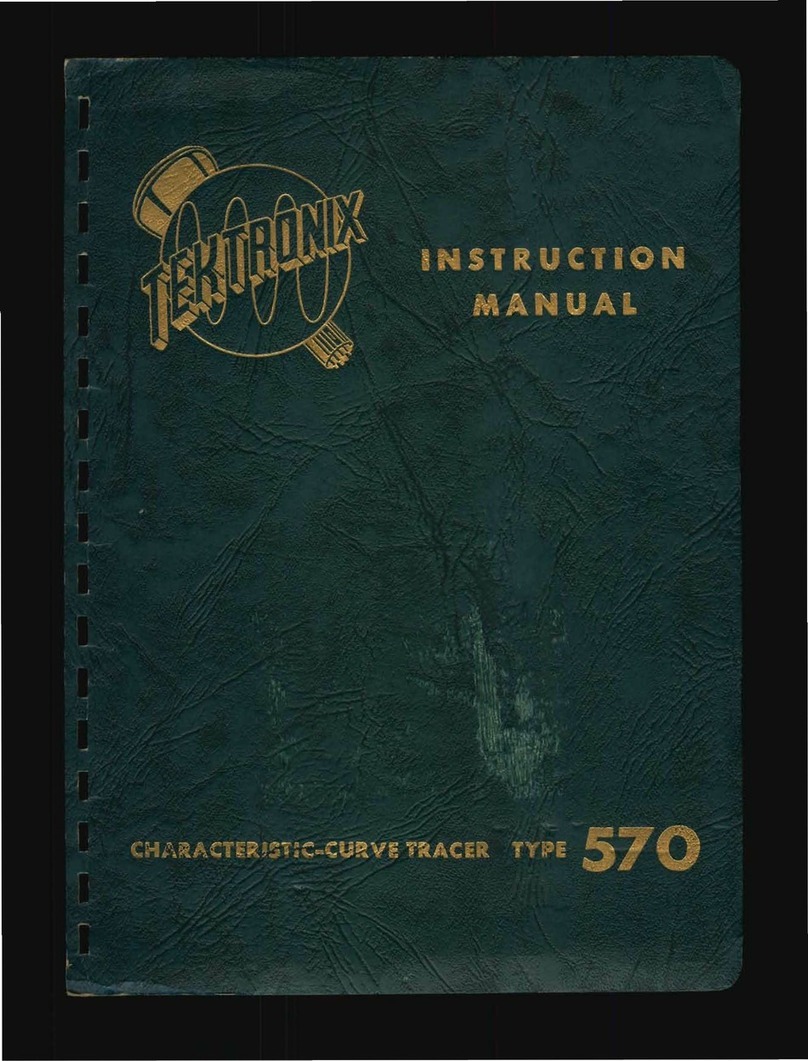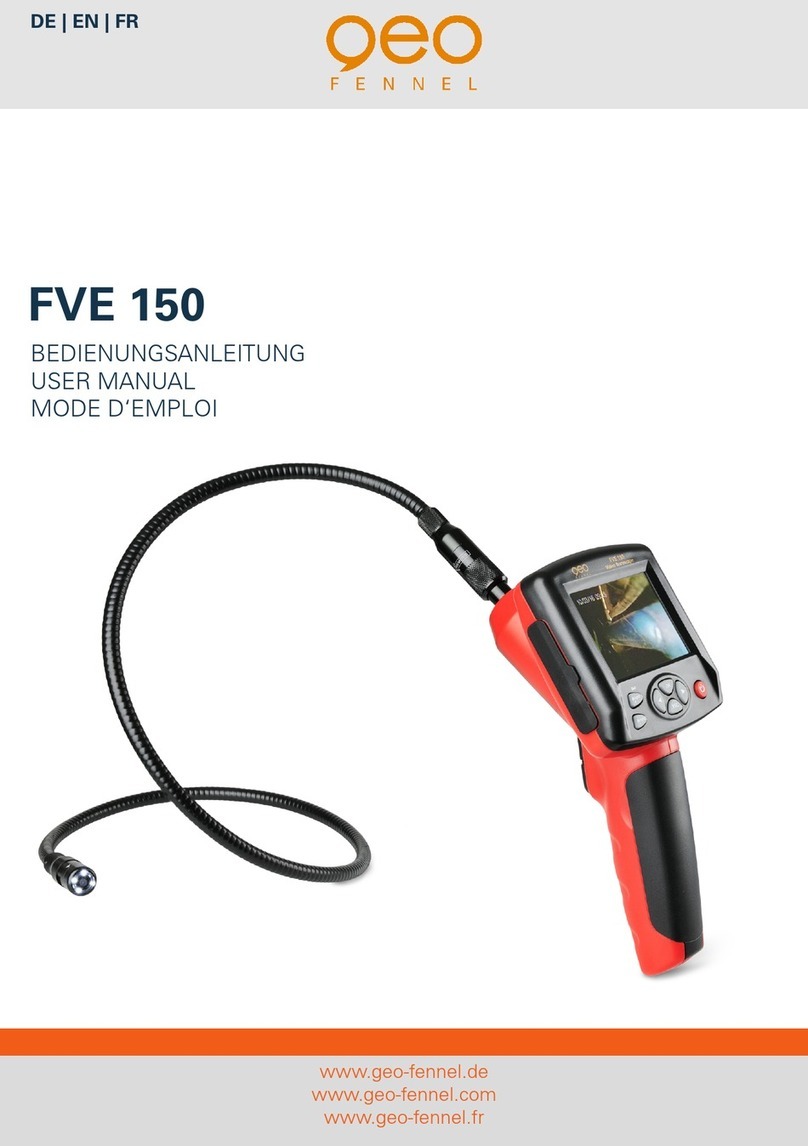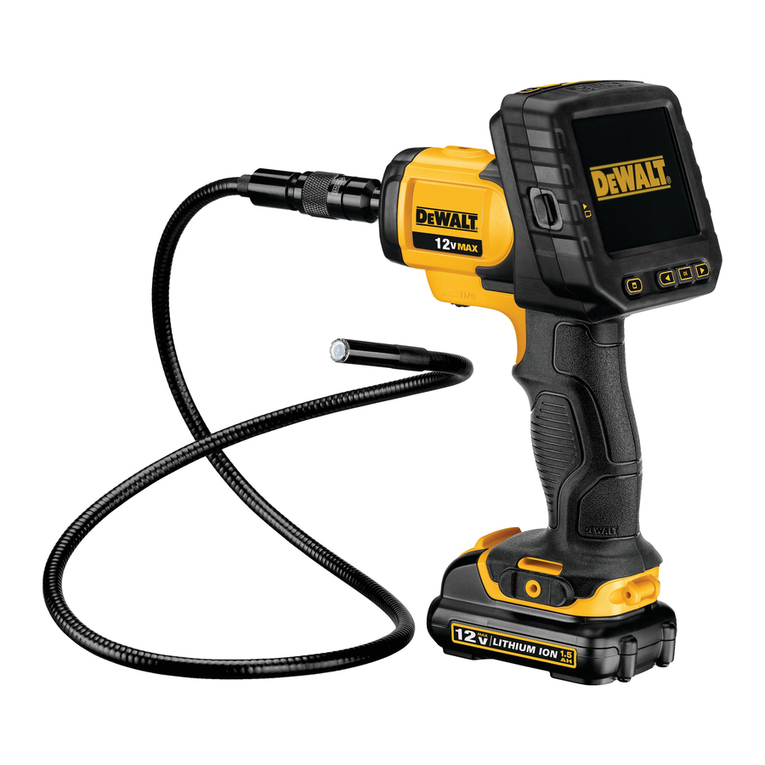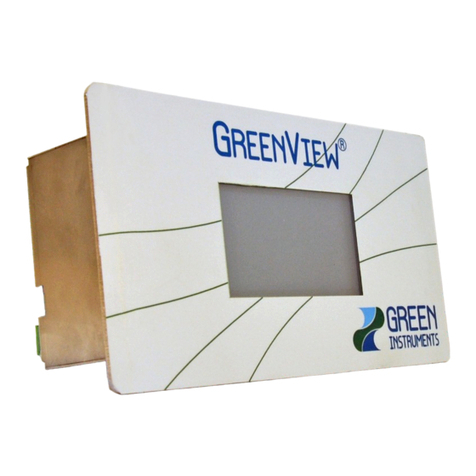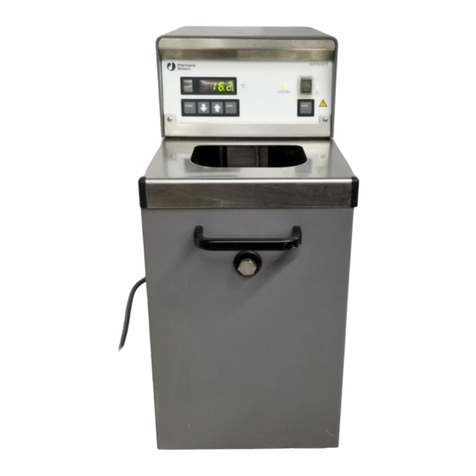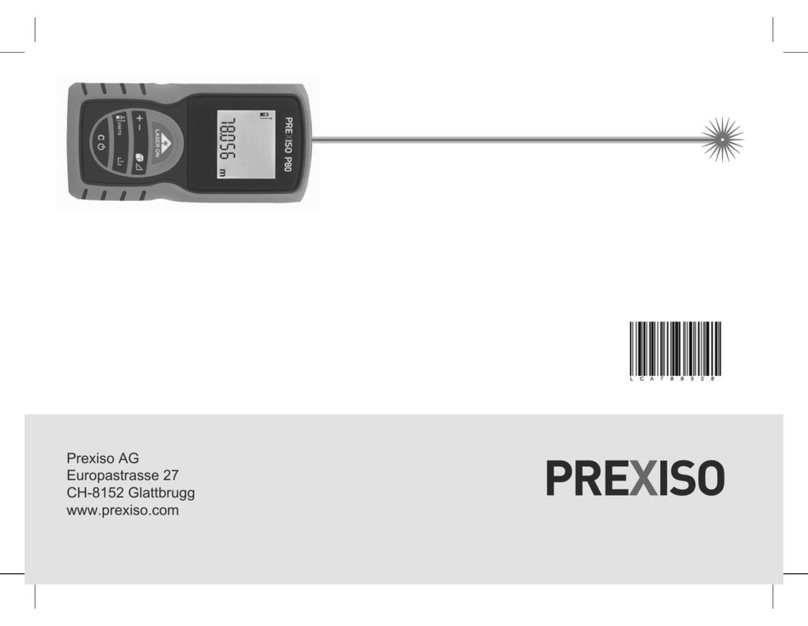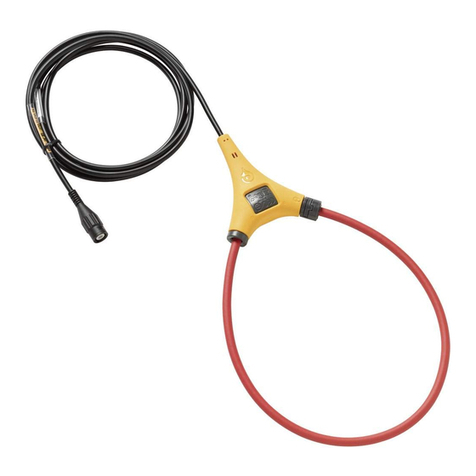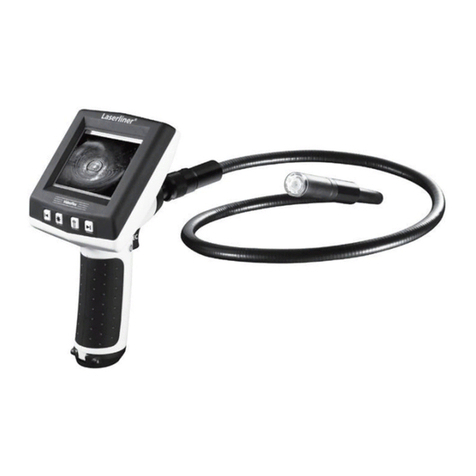RoboSense LiDAR RS-Ruby Plus User manual

RS-Ruby Plus User Manual
User Manual

RS-Ruby Plus User Manual
I
Issue
Modifications
Release Date
Edite
d by
1.0.0
Original issue
2022-04-08
PD
1.0.1
1.Updated performance parameters;
2.Added Appendix F correspondence table of
channel ranging ability
3.Corrected the calculation formula for Current,
Voltage and Temperature
4.Added the introduction of high performance
mode
5.Added description of motor rotation direction
2022-6-29
PD
1.0.2
1.Corrected current calculation formula
2.Added description of accessories
2022-7-4
PD
1.0.3
1. Modify the calculation formula of voltage and
temperature
2. Modify the frame header structure of the
MSOP packet
2022-7-7
PD
1.0.4
1.Correct the MSOP description
2.Correct the picture of rotation direction
2022-9-9
PD

RS-Ruby Plus User Manual
II
Terminologies
MSOP
Main data Stream Output Protocol
DIFOP
Device Info Output Protocol
FOV
Field Of View
PTP
Precision Time Protocol
NTP
Network Time Protocol
GPS
Global Positioning System
UTC
Universal Time Coordinated
Protocol
Protocol version number, 01 represents old version, 02 represents the latest
version
Wave_mode
Echo flag
Temp
Sensor temperature information
Resv
Reserved data flag
Ret_id
Return ID in the data packet
Azimuth
LiDAR horizontal rotation angle
Timestamp
Time stamp which is used to record system time
Header
Frame header in protocol packet
Tail
Frame tail in protocol packet

RS-Ruby Plus User Manual
III
Content
1 Safety Notices..............................................................................................................................................................1
2 Product Appearance and Interface...................................................................................................................... 2
2.1 Product Appearance.................................................................................................................................... 2
2.2 Aviation Plug and Pin Definition.............................................................................................................. 2
2.2.1 Power...................................................................................................................................................4
2.2.2 RJ45 Ethernet Port.......................................................................................................................... 5
2.2.3 I/O definition .................................................................................................................................... 5
3 Unboxing & Installation............................................................................................................................................6
3.1 Optional accessories ....................................................................................................................................6
3.2 Sensor Mounting...........................................................................................................................................6
3.3 Quick Connection ..........................................................................................................................................7
4 Sensor Specifications and Features......................................................................................................................8
4.1 Sensor Specification1................................................................................................................................... 8
4.1.1 Parameters.........................................................................................................................................8
4.2 Point Cloud Display...................................................................................................................................... 9
4.2.1 Coordinate Mapping...................................................................................................................... 9
4.3 Reflectivity.......................................................................................................................................................9
4.4 Laser Return Modes .................................................................................................................................. 10
4.4.1 Principle of Laser Return Modes............................................................................................. 10
4.4.2 Return Mode Flag.........................................................................................................................11
4.5 Phase Locking.............................................................................................................................................. 11
4.6 Time Synchronization............................................................................................................................... 12
4.6.1 GPS Time Synchronization.........................................................................................................12
4.6.2 The Use of GPS for Time Synchronization............................................................................12
4.6.3 PTP Time Synchronization......................................................................................................... 13
4.6.4 PTP wiring Method.......................................................................................................................13
4.6.5 Time Calculation........................................................................................................................... 14
5 Communication Protocol...................................................................................................................................... 16
5.1 MSOP and DIFOP........................................................................................................................................16
5.2 Main Data Stream Output Protocol(MSOP)............................................................................... 17
5.2.1 Header ..............................................................................................................................................17
5.2.2 Data Blocks......................................................................................................................................18
5.2.3 Tail......................................................................................................................................................20
5.3 Device Info Output Protocol(DIFOP).............................................................................................20
6 Vertical Angles and Precision Point Timing Calculation ..............................................................................22
6.1 Channel Number and Vertical Angle ................................................................................................... 22
6.2 Exact Point Timing Calculation.............................................................................................................. 22
7 Troubleshooting ....................................................................................................................................................... 26
Appendix A Web Interface....................................................................................................................................... 28
A.1 Device Screen..............................................................................................................................................28
A.2 Web Interface for Sensor Setting ......................................................................................................... 28
A.3 Diagnostic Screen ...................................................................................................................................... 31

RS-Ruby Plus User Manual
IV
A.4 System Screen.............................................................................................................................................32
Appendix B Information Registers.........................................................................................................................34
B.1 Motor Speed (MOT_SPD) ........................................................................................................................34
B.2 Ethernet(ETH).......................................................................................................................................34
B.3 FOV Setting(FOV_SET)....................................................................................................................... 35
B.4 Motor Phase Offset (MOT_PHASE)......................................................................................................35
B.5 Top Board Firmware Version (TOP_FRM).......................................................................................... 35
B.6 Bottom Board Firmware Version(BOT_FRM)....................................................................................36
B.7 Software Version(SOF_FRM)..................................................................................................................36
B.8 Web CGI Version(SOF_FRM)...................................................................................................................36
B.9 Corrected Vertical Angle(COR_VERT_ANG) ...................................................................................... 36
B.10 Corrected Horizontal Angle(COR_HOR_ANG)............................................................................ 37
B.11 Serial Number(SN)............................................................................................................................... 38
B.12 Time synchronization Setting(Sync_set)...................................................................................38
B.13Time synchronization Status(Sync_Status)............................................................................... 39
B.14 UTC Time(UTC_TIME)......................................................................................................................39
B.15 Rotation Direction(ROTATION)..................................................................................................... 39
B.16 STATUS(STATUS).................................................................................................................................39
B.17 Fault Diagnosis(FALT_DIGS)...........................................................................................................40
B.18 GPRMC Data Packet-ASCII Code Data Type.................................................................................... 41
Appendix C RSView.....................................................................................................................................................42
C.1 Software Features......................................................................................................................................42
C.2 Install RSView .............................................................................................................................................. 42
C.3 Set Up Network.......................................................................................................................................... 42
C.4 Visualize Streaming Sensor Data.......................................................................................................... 43
C.5 Capture Streaming Sensor Data to PCAP File ...................................................................................44
C.6 Replay PCAP File .........................................................................................................................................45
Appendix D RS-Ruby Plus ROS&ROS2 Package................................................................................................. 48
D.1 Install Software...........................................................................................................................................48
D.2 Download & Compile RoboSense LiDAR Driver Package............................................................. 48
D.3 Configure PC IP........................................................................................................................................... 49
D.4 Real Time Display.......................................................................................................................................49
D.5 View Offline Data.......................................................................................................................................50
Appendix E Mechanical Drawings ......................................................................................................................... 51
Appendix F Correspondence Table of Channel Ranging Ability .................................................................. 52
Appendix G Sensor Cleaning ................................................................................................................................... 52
G.1 Attention.......................................................................................................................................................53
G.2 Cleaning Method....................................................................................................................................... 53
G.3 Required Materials....................................................................................................................................53

RS-Ruby Plus User Manual
V
1 Manufacturer Information
Suteng Innovation Technology Co., Ltd. (RoboSense)
Building 9, Block 2, Zhongguan Honghualing Industry Southern District, 1213 Liuxian Avenue,
Taoyuan Street, Nanshan District, Shenzhen, ChinaLandline: 0755-86325830
Mobile Phone: +86 15338772453(Marketing & Sales Cooperation)
Email: service@robosense.cn
Working hours from Monday to Friday 09:00-18:00(GMT/UTC +8)
2 Disclaimer of Liability
This manual is protected by copyright. Any rights arising from this copyright are owned by
RoboSense. Reproduction of this manual or part of the manual is only permitted within the legal
scope of the copyright law. Without obtaining any authorization, this document shall not be
abridged or translated. The trademarks mentioned in this document are the property of their
respective owners. RoboSense reserves all rights.
3 Certifications
Coming soon
Note:
This manual is updated from time to time without prior notice, to get the latest version, please
visit RoboSense company website to download or contact the RoboSense Technical Support or
Sales.

RS-Ruby Plus User Manual
1
1 Safety Notices
To avoid risks of accidents, damage to sensor or violating of your product warranty, please read
and follow the instructions in this manual carefully before operating the product.
Please pay attention to the overheating sign on the LiDAR surface to avoid a hot LiDAR
surface that may lead to sensor failure or undesirable consequences.
Retain Instructions - The safety and operating instructions should be retained for future
reference.
Heed Warnings - All warnings on the product and in the operating instructions should be
adhered to.
Servicing – Except for what’s described in this manual, the sensor has no field serviceable
parts. For servicing, please contact RoboSense sales or the authorized distributors.

RS-Ruby Plus User Manual
2
2 Product Appearance and Interface
2.1 Product Appearance
Figure 2-1 LiDAR Coordinate and Rotation Direction
2.2 Aviation Plug and Pin Definition
RS-Ruby Plus has two aviation plugs attached to the bottom of the LiDAR, the definitions of the
specific pins of the aviation plug are as shown in the table below:
Figure 2-2 4 pin Airline
Table 2-1 4 Definition of pin Airline
Pin A
Color
Definition
Pin B
1
Red
TRD_P
a1
2
Black
TRD_N
b1
3
White
PGND
a2
4
Green
PGND
b2
Shell
Shield
PGND
a3
b3
Aviation plug interface side
270
90

RS-Ruby Plus User Manual
3
Figure 2-3 16 Pin Airline
Table 2-2 16 Definition of pin Airline
Pin A
Color
Definition
Pin B
1
Blue
Power
a1
2
Blue and White
Power
b1
3
Pink
Power
a2
4
Grey
Power
b2
5
Red
GND
a3
6
Red and White
GND
b3
7
Black
GND
a4
8
Black and White
GND
b4
9
Green
/
a5
10
Green and White
/
b5
11
Purple
PPS
a6
12
Purple and White
GPRMC
b6
13
Orange
SYNC_OUT1
a7
14
Orange and White
SYNC_OUT2
b7
15
Brown
SYNC_OUT3
a8
16
Brown and White
PGND
b8
Shell
Shield
/
a9
/
b9
/
/
/
a10
/
/
/
b10
RS-Ruby Plus comes with an Interface Box, which has LED lights and provides convenient
connections to power, RJ45 Ethernet, and GPS. (The length of the integrated cable attached to
the Interface Box of the aviation plug version LiDAR is 3 meters, for other cable lengths, please
contact RoboSense technical support).

RS-Ruby Plus User Manual
4
Figure 2-4 Interface Box Schematic
Table 2-3 Definition of PWR
No.
Color
Definition
A1
Black
GND
A2
Black
GND
A3
Blue
Power
Table 2-4 Definition of I/O
No.
Color
Definition
A1
Blue
+5V
B1
Orange
SYNC_OUT_1
A2
Purple
GPS_PPS
B2
Orange and White
SYNC_OUT_2
A3
Purple and White
GPRMC
B3
Brown
SYNC_OUT_3
A4
Red
GND
B4
/
/
A5
Red and White
GND
B5
/
/
A6
Black and White
GND
B6
/
/
Specifications of Interface Box ports:
Table 2-5 Interface Box Port Specification
No.
Port
Specification(Outlet)
Specification(Connect the radar)
1
Power Input
JST S03B-J11SK-TXR
JST S20B-J11DK-TXR
2
I/O
JST S12B-J11DK-TXR
3
Network
Standard RJ45 connector
JST S06B-J11Dk-TXR
2.2.1 Power
The RS-Ruby Plus power supply interface on the Interface Box is a JST S03B-J11SK-TXR Model
connector, and comes with a standard DC 5.5-2.1 connector. When the power input is normal,

RS-Ruby Plus User Manual
5
the green LED lights up, please check if the power input is normal when the green LED lights off.
If the power input is normal, the Interface BOX may be damaged. Please contact our technical
support & sales.
2.2.2 RJ45 Ethernet Port
The RS-Ruby Plus only supports the T1 car Ethernet. The network interface on the Interface Box
follows the RJ45 standard.
2.2.3 I/O definition
The definition of the RS-Ruby Plus interface box and the corresponding position of each interface
are shown in table 2-3 and table 2-4: SYNC_OUT_1, SYNC_OUT_2, SYNC_OUT_3 are angle trigger
pin, which can trigger camera to take pictures; PPS+GPRMC uses GPS for Time
Synchronization;The + 5V is used for GPS power supply.
Note: When the "ground" of RS-Ruby Plus is connected to an external system, the negative
polarity ("ground") of the external system and the "ground" of the GPS system must share a
non-isolated common ground.

RS-Ruby Plus User Manual
6
3 Unboxing & Installation
3.1 Optional accessories
RS-Ruby Plus package does not include accessories by default and requires additional purchase;
The table below lists the optional accessoriesof RS-Ruby Plus from the factory.
Table 3-1 Optional Accessories of the RS-Ruby Plus
No.
Contents
SPEC/QTY
1
Interface Box
*1
2
4 pin Airline
3m /4m/6m/12m
3
16 pin Airline
3m /4m/6m/12m
4
Power Adapter
DC12Vx3.34A/40W *1
5
Power Cable
1.2M *1
6
Ethernet Cable
1.5M *1
7
Screw Pack
M4x10 *3
Note: If there are special requirements, please refer to the actual negotiation.
3.2 Sensor Mounting
As shown in the figure below, the mounting surface of the LiDAR should be flat and uneven
surfaces should be avoided.The precise locator pins on the mounting base should strictly follow
the dimensions of the locator holes at the bottom of the LiDAR, and the height of the locator pin
should not be higher than 4mm. We recommend using aluminum alloy for the mounting base
material, which facilitates heat dissipating of the LiDAR during operating.

RS-Ruby Plus User Manual
7
Figure 3-1 LiDAR Mounting Details
The following situations should be avoided when mounting the LiDAR:
1)If there are contact mounting surfaces on the top and bottom of the LiDAR, please ensure that
the distance between the mounting surfaces is greater than the height of the LiDAR to avoid
squeezing the LiDAR.
2)The installation inclination angle should be more than 15 degrees
3)
When connecting cables of the LiDAR, make sure not to pull the cable too tightly, and keep the
cables in a slack state.
3.3 Quick Connection
Users are allowed to configure the network settings of the RS-Ruby Plus, which is set at the
factory with default IP and port numbers, as shown in the table below:
Table 3-2 Factory Default Network Configuration
IP Address
MSOP Port No.
DIFOP Port No.
RS-Ruby Plus
192.168.1.200
6699
7788
Computer
192.168.1.102
To establish communication between the LiDAR and computer, it’s required to set the computer's
IP address to the same network segment as the LiDAR, for example 192.168.1.x (the value of x
could be from 1 to 254), and the subnet mask to 255.255.255.0. If you don't know the network
configuration of the LiDAR, please connect the LiDAR to computer and use wireshark to capture
the LiDAR data packets to analyze.

RS-Ruby Plus User Manual
8
4 Sensor Specifications and Features
4.1 Sensor Specification1
4.1.1 Parameters
Table 4-1 Sensor Parameters
Sensor
Laser Channels
128
FOV(Horizontal)
360°
Laser Wavelength
905nm
FOV(Vertical)
﹢15° ~ -25°(40°in total)
Laser Emission Angle
(Full Angel)
Horizontal:2.0mrad
Vertical: 1.7mrad
Angular Resolution
(Horizontal)
0.2°/ 0.4°(Balance Mode)
0.1°/ 0.2°(High Performance Mode)
Laser Safety
Class 1 Eye-safe
Angular Resolution
(Vertical)
+3.82°~ -6.51°:0.1°(104 channels)
Measurement Range1
0.4m to 240m
(240m@10% NIST)
Ranging Accuracy
(Typical)2
Up to±3cm
Blind Distance
≤0.4m
Frame Rate
10Hz/ 20 Hz
Rotation Speed
600/ 1200 rmp(10/20Hz)
Output
Data Rate
2,304,000pts/s (Single Return Mode)4,608,000pts/s (Dual Return Mode)
4,608,000pts/s (High Performance Mode)9,216,000pts/s (High Performance Mode)
Ethernet
1000M-Base-T1
Data Output Protocol
UDP packets over Ethernet
UDP Packets Content
3D Coordinates, Calibrated Reflectivity Measurements, Time Stamps
Mechanical
Operating Voltage
9V - 32V
Dimension
φ125mm * H128 mm
Power Consumption3
27W(Typical)
Operating
Temperature4
-40℃~ +60℃
Weight
1.85kg(LiDAR body)
Storage Temperature
-40℃~ +85℃
Time Synchronization
$GPRMC with 1 PPS &
PTP/gPTP
Sensor Protection
IP67/IP6K9K
1The measurement range is based on a 10% NIST diffuse reflector, and the test results may be affected by the
environment conditions, including but not limited to ambient temperature, light intensity and other factors;
2The ranging accuracy takes a 50% NIST diffuse reflector as the target. The test results may be affected by
environment conditions, including but not limited to factors such as ambient temperature and target distance.
The accuracy value is applicable to most channels, and there may exists differences between some channels.
3The power consumption of the device may be affected by environment conditions, including but not limited to
factors such as ambient temperature, target distance, target reflectivity, etc.
4The operating temperature of the device may be affected by environment conditions, including but not limited
to factors such as ambient light and airflow changes.

RS-Ruby Plus User Manual
9
4.2 Point Cloud Display
4.2.1 Coordinate Mapping
Since the data packet output by the LiDAR only provides the horizontal rotation angle and
distance parameters, in order to present a 3D point cloud image, the angle and distance
information in polar coordinates need to be converted into x, y, z coordinates in the Cartesian
coordinate system, and the conversion formula is as follows:
Where is the measured distance,
is the vertical angle of the laser,
is the horizontal
rotation angle of the laser in the Polar Coordinate System, and x, y, z are the coordinate values in
the Cartesian Coordinate System
Note : SDK source code of RS-Ruby Plus has by default completed the coordinate conversion to conform to the
right-handed coordinate system of ROS. The X-axis of ROS is the positive Y direction in Figure 2-1, and the Y-axis
of ROS is the negative X direction in Figure 2-1.
4.3 Reflectivity
RS-Ruby Plus measures the reflectivity of objects. The reflectivity is an index that measures the
ability of an object to reflect light and is greatly related to the material of the object itself.
Therefore, the reflectivity information can be used to distinguish objects of different materials.
RS-Ruby Plus reports calibrated reflectivity values from 0 to 255, among which diffuse reflectors
report values from 0 to 100, and retroreflectors report values from 101 to 255. Black objects are
with low reflectivity values, white objects are with high reflectivity values, the most ideal
reflection reports the reflectivity value of 255.

RS-Ruby Plus User Manual
10
Figure 4-1 Definition of Reflectivity
4.4 Laser Return Modes
4.4.1 Principle of Laser Return Modes
RS-Ruby Plus supports multiple laser return modes, namely: Strongest, Last, First, and Dual.
When set to Dual Return mode, the details of the target will increase, and the volume of data is
twice that in the Single Return mode.
Due to beam divergence, multiple laser returns are possible from any single laser shot. After a
laser pulse is shot, the beam size becomes larger and larger as it travels in the air, when a beam is
large enough to hit multiple objects, it will produce multiple reflections.
RS-Ruby Plus analyzes the received multiple returns, and can be set to only report the strongest
return, first return or the last return each time in the single return mode, or report the strongest
and last return, the strongest and first return, or the first and the last return at the same time in
dual return mode, depending on the laser return mode settings. If it is set to the strongest return
mode, only the value of strongest return will be reported. Similarly, if is set to the last return
mode, only the value of the last return will be reported.
Diffuse Reflectors
Black, absorbent diffuse reflector
Reflectivity ≈0
White, reflective diffuse reflector
Reflectivity <100
Retro-Reflectors
Retro-reflector covered with-
Semi transparent white surface
Reflectivity>100
Retro-reflector without any coverage
Reflectibity≈255

RS-Ruby Plus User Manual
11
Note:
1)The sensor records both returns only when the distance between two objects is 2meter or more.
2)When a laser pulse hits only one object, there is only the strongest return.
4.4.2 Return Mode Flag
The RS-Ruby Plus is set in the Strongest Return mode at factory by default. If you need to change
this settings, please refer to Appendix A of this user manual for instructions. The 300th byte in a
DIFOP packet is the flag of return mode, which corresponds to the following:
Table 4-2 Return Mode Flag
Flag
Return Mode
00
Strongest Return
01
Last Return
02
First return
03
Strongest + Last Return
04
Strongest + First Return
05
Last + First return
4.5 Phase Locking
The phase locking feature, when a PPS pulse signal is triggered, askes the RS-Ruby Plus to rotate
to a specific angle to fire laser pulses. When multiple RS-Ruby Plus sensors are used at the same
time, the relative rotation angle between them is kept unchanged. The normal phase locking
requires the normal and stable PPS pulse triggering signal.
Figure 4-2 shows the RS-Ruby Plus set with different phases. The red arrows indicate the firing
angle of the sensor’s laser at the moment it receives the rising edge of the PPS signal. In the cases
below: 0 degrees, 135 degrees, and 270 degrees respectively.
Figure 4-2 RS-Ruby Plus Different Phase Settings
Using the Web Interface, click Setting > Phase Lock Setting, for the "Phase Lock" parameter
setting. The phase locking value can be set from 0 to 359.

RS-Ruby Plus User Manual
12
4.6 Time Synchronization
RS-Ruby Plus supports GPS+PPS and PTP time synchronization methods.Users can use the
RS-Ruby Plus Web Interface to set. (Please refer to Appendix A.2)
RS-Ruby Plus can be connected to an external GPS module and can synchronize the sensor system
time with the time provided by the GPS.
4.6.1 GPS Time Synchronization
Figure 4-3 GPS Time Synchronization Timing Diagram
The GPS module continuously sends GPRMC message and PPS synchronization pulse signals to
the sensor. The PPS synchronization pulse width is from 20ms to 200ms, and the GPRMC message
must be sent within 500ms after the rising edge of the PPS synchronization pulse.
4.6.2 The Use of GPS for Time Synchronization
The GPS_REC interface in the Interface Box of the RS-Ruby Plus follows the RS232 level standard,
as shown in the table below:
Table 4-3 GPS Receive Pin Definition
Level
Receive Pin Definition
GPS GPRMC
GPS PPS
RS232
Receive the RS232 serial data
output by the GPS module
Receive the positive synchronization pulse signal
output by the GPS module, the level is required
to be 3.0V~15.0V
Note 1: The GPS_REC interface in the RS-Ruby Plus Interface Box is the JST S12B-J11DK-TXR connector, and the pin
definition is as shown in Figure 2-4.
The external GPS module needs to set the serial output baud rate to 9600bps, 8 bits, no parity, 1
stop bit. RS-Ruby Plus only accepts the GPRMC sentence sent by the GPS module. The standard
structure of the GPRMC sentence is as follows:
$GPRMC,<1>,<2>,<3>,<4>,<5>,<6>,<7>,<8>,<9>,<10>,<11>,<12>*hh
According to GPRMC message, synchronize the part of second
Reset part of sub-second

RS-Ruby Plus User Manual
13
<1> UTC Time
<2> Receiver status, A=active, V=void
<3> Latitude
<4> Latitudinal hemisphere N (northern hemisphere) or S (southern hemisphere)
<5> Longitude
<6> Longitudinal hemisphere E (east longitude) or W (west longitude)
<7> Speed over the ground(knots)
<8> Track made good (degrees True)
<9> UTC date
<10> Magnetic declination
<11> Magnetic declination direction, E (east) or W (west)
<12> Mode indicator (A=autonomous, D=differential, E=estimated, N=not valid)
* The last hh is the XOR sum of all characters from $ to *
The length of GPRMC messages sent by existing GPS modules on the market is not consistent.
The length of GPRMC messages reserved in the DIFOP packet of RS-Ruby Plus is up to 86 bytes,
which is compatible with the GPRMC message format sent by most GPS modules on the market.
If an incompatibility occurs, please contact RoboSense technical support.
4.6.3 PTP Time Synchronization
PTP (Precision Time Protocol) is a time synchronization protocol, which itself is only used for
high-precision time synchronization between devices, but it can also be borrowed for frequency
synchronization between devices. Compared with various existing time synchronization
mechanisms, PTP has the following advantages:
1) Compared with NTP (Network Time Protocol, Network Time Protocol), PTP can meet
higher-precision time synchronization requirements. NTP can generally only achieve sub-second
time synchronization accuracy, while PTP can reach sub-microsecond time synchronization
accuracy.
2) Compared with GPS (Global Positioning System), PTP has lower construction and maintenance
costs. And it is also of special significance in national security because it can get rid of the
dependence on GPS.
4.6.4 PTP wiring Method
To use the PTP synchronization method, you need to make the following preparations, and then
connect according to the connection method shown in the figure below:

RS-Ruby Plus User Manual
14
1) Select PTP mode in the web interface (please see Appendix A.2 Web Interface configuration);
2) Prepare a PTP Master timing host (plug and play, no additional configuration required);
3) Ethernet switch;
4) Device supporting PTP protocol
Figure 4-4 PTP Connecting Diagram
Note:
1. The PTP Master timing equipment is a third-party equipment that needs to be purchased by the user
independently, which is not included in the shipping package.
2. As a PTP Slave device, our LiDAR only obtains the time sent by the PTP Master, and does not make accuracy
judgments. If the time of the LiDAR deviates from the real time, please check whether the time provided by the
PTP Master is accurate;
3. After the LiDAR is synchronized, the PTP Master is disconnected, and the time in the point cloud data packet
will be superimposed according to the LiDAR's internal clock, and it will be reset after the LiDAR is powered off
and restarted.
4.6.5 Time Calculation
MSOP packets contain time information,a set of default times is used for timing without external
time synchronization and it will be updated after using the external time synchronization。
The timestamp analysis in the point cloud data package is as follows:
PTP Master(third party)
Ethernet Switch
LiDAR Configuration Box
Table of contents
Popular Analytical Instrument manuals by other brands
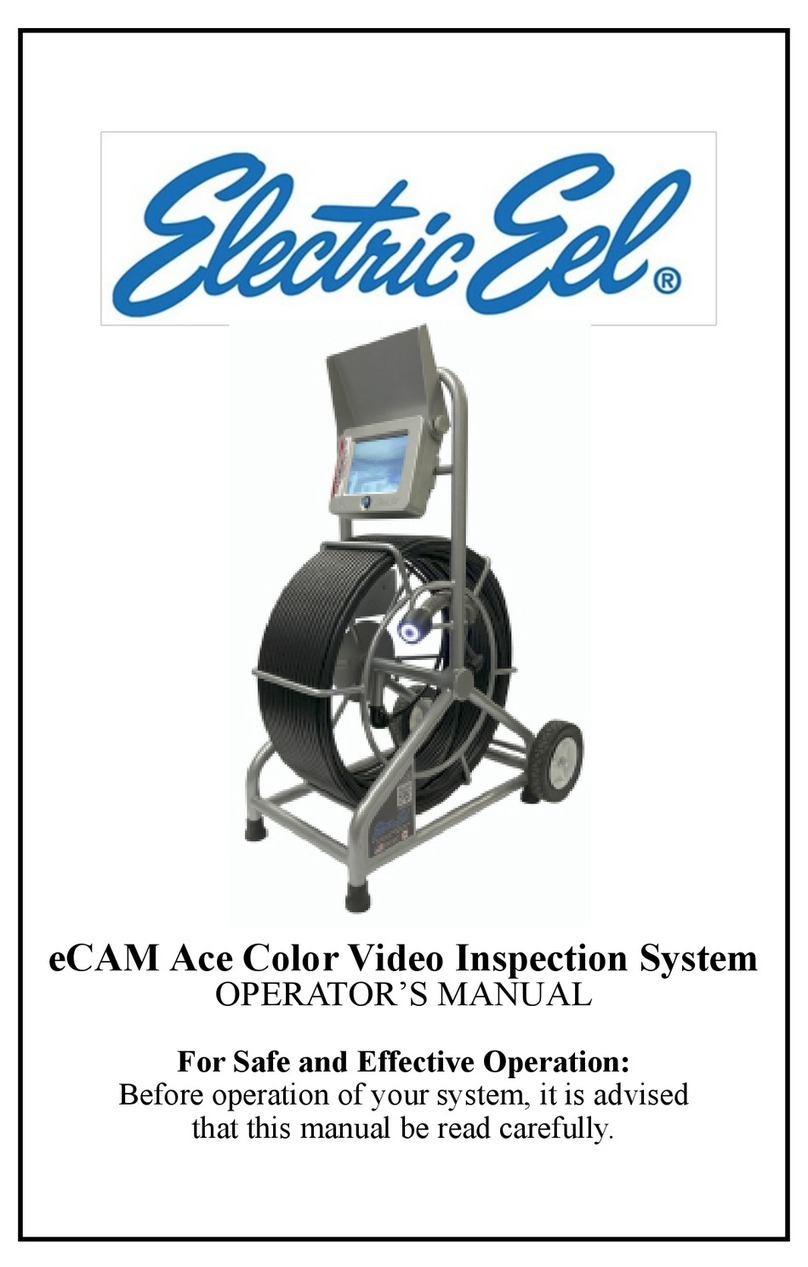
Electric Eel
Electric Eel Ecam Ace Operator's manual

YDLIDAR
YDLIDAR TIA user manual
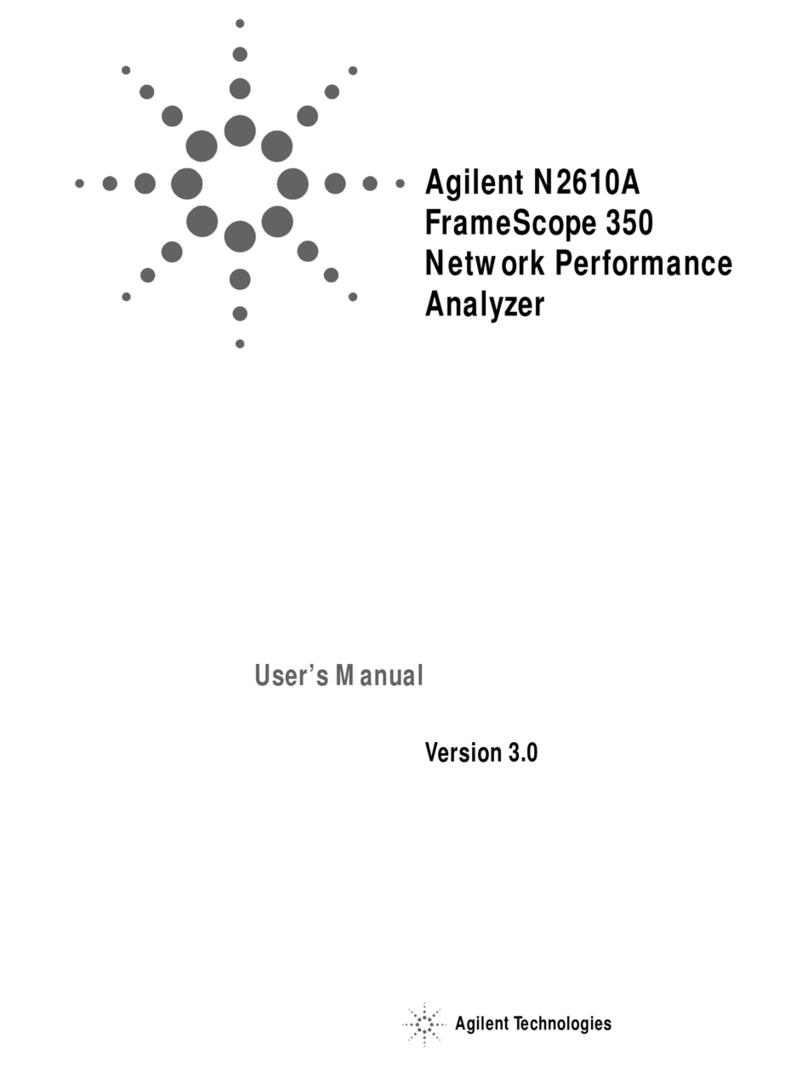
Agilent Technologies
Agilent Technologies N2610A user manual
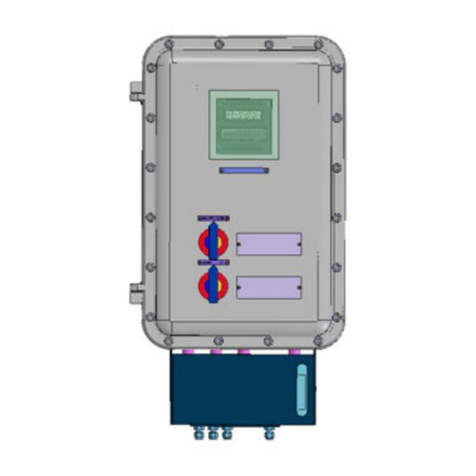
Teledyne Analytical Instruments
Teledyne Analytical Instruments 3020 M operating instructions
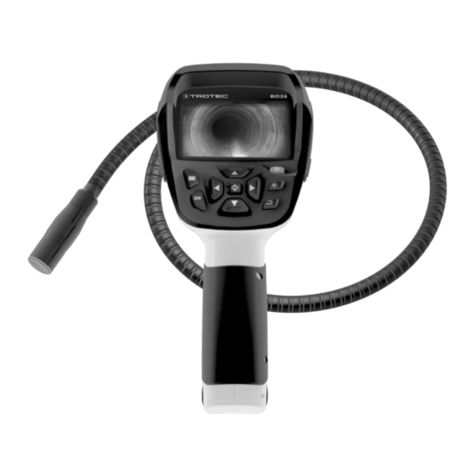
Trotec
Trotec BO26 operating manual
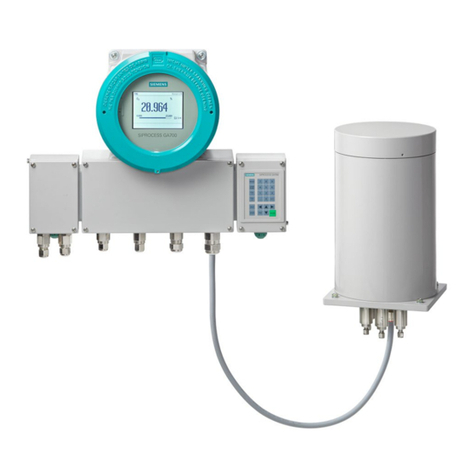
Siemens
Siemens SIPROCESS GA700 operating manual
